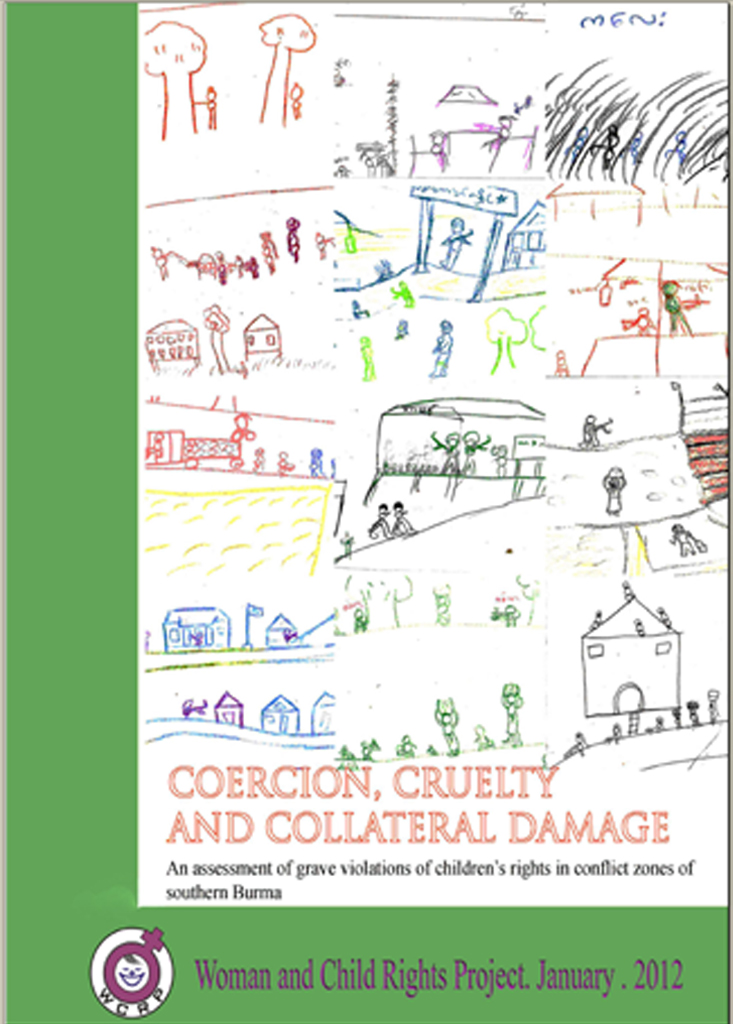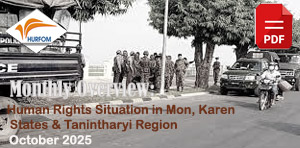Coercion, Cruelty and Collateral Damage
January 13, 2012
An assessment of grave violations of children’s rights in conflict zones of southern Burma
This report is titled “Coercion, Cruelty and Collateral Damage: An assessment of grave violations of children’s rights in conflict zones of southern Burma”, and it is released by the Woman and Child Rights Project (WCRP), which was founded in 2000 by members of the Human Rights Foundation of Monland (HURFOM) to monitor and protect the rights of women and children in southern Burma. The 24-page report reveals that grave violations of children’s rights such as recruitment of child soldiers, killing and maiming, rape and sexual abuse, and forced labor continue to be committed by the Burmese military, despite the creation, by the United Nation Security Council (UNSC) resolution 1612 on Children and Armed Conflict passed in 2005.Download report as PDF [2.1MB]
 Research by the Women and Child Rights Project (WCRP) has demonstrated that grave violations of children’s rights continue to occur in southern Burma despite the creation, by the United Nations, of the Monitoring and Reporting Mechanism (MRM) pursuant to United Nations Security Council (UNSC) Resolution 1612 on Children and Armed Conflict passed in 2005.
Research by the Women and Child Rights Project (WCRP) has demonstrated that grave violations of children’s rights continue to occur in southern Burma despite the creation, by the United Nations, of the Monitoring and Reporting Mechanism (MRM) pursuant to United Nations Security Council (UNSC) Resolution 1612 on Children and Armed Conflict passed in 2005.
The Burmese government has failed to meet the time-bound action plan under Resolution 1612, demonstrated by the fact that WCRP researchers found numerous accounts of ‘grave violations’ under United Nations Security Council’s Resolution 1612 on children and armed conflict. These violations, committed by Burmese soldiers against children in southern Burma, include recruitment of child soldiers, killing and maiming, rape and sexual abuse, and forced labor. Though the Burmese government agreed to the implementation of a monitoring and reporting mechanism (MRM), pursuant to Resolution 1612, to report on instances of these grave violations, WCRP has found that abuses have continued unabated since 2005.
The data detailed below provide evidence of widespread and systematic abuses, the vast majority of which were committed by soldiers from the Tatmadaw, the Burmese military. These confirmed cases of grave violations, taken from just 15 villages in two townships, committed over a period of 5 years, suggest that the Burmese government has failed to live up to its obligations under international law to protect children during situations of armed conflict. Limitations imposed by the Burmese government on the UN country team has made it difficult for them to receive, or verify, accounts of grave violations, in turn preventing the MRM from making a noticeable impact on the continued widespread abuse of children in southern Burma. WCRP’s data strongly suggests that the real numbers of abuses against children is vastly greater than officially recognized.
Additionally, despite the fact that WCRP’s primary research covered only the period from 2005 through November 2010, recent updated reports suggest that all of the violations documented by WCRP have continued to occur over the course of the past year. Despite the political changes that may be underway in Naypyidaw, children in areas where armed conflict is ongoing continue to suffer grave violations. Thus, the international community must take further action to ensure that the MRM can effectively protect the rights of Burma’s children and realize the objective put forth in Resolution 1612, an end to the grave violations of children’s rights.
Comments
Got something to say?
You must be logged in to post a comment.



















































